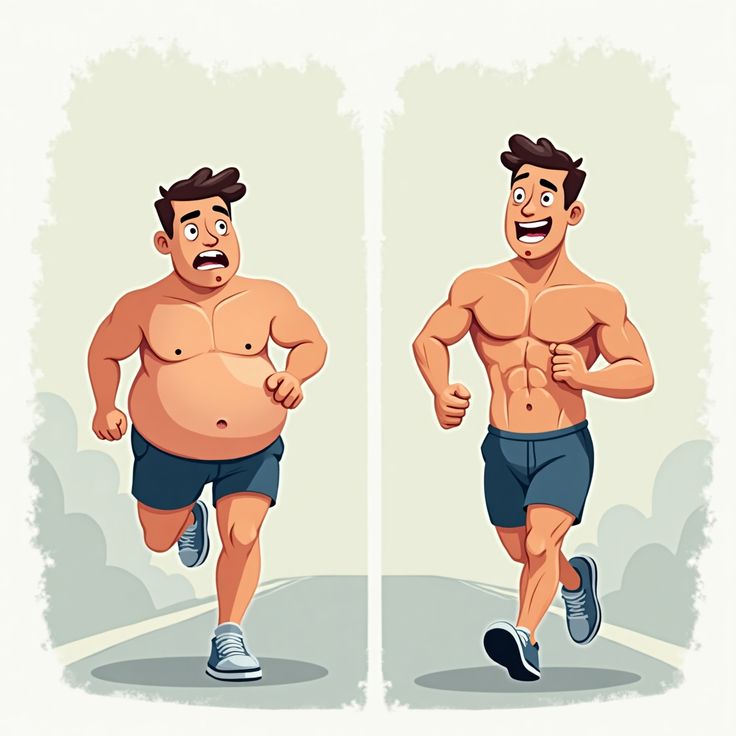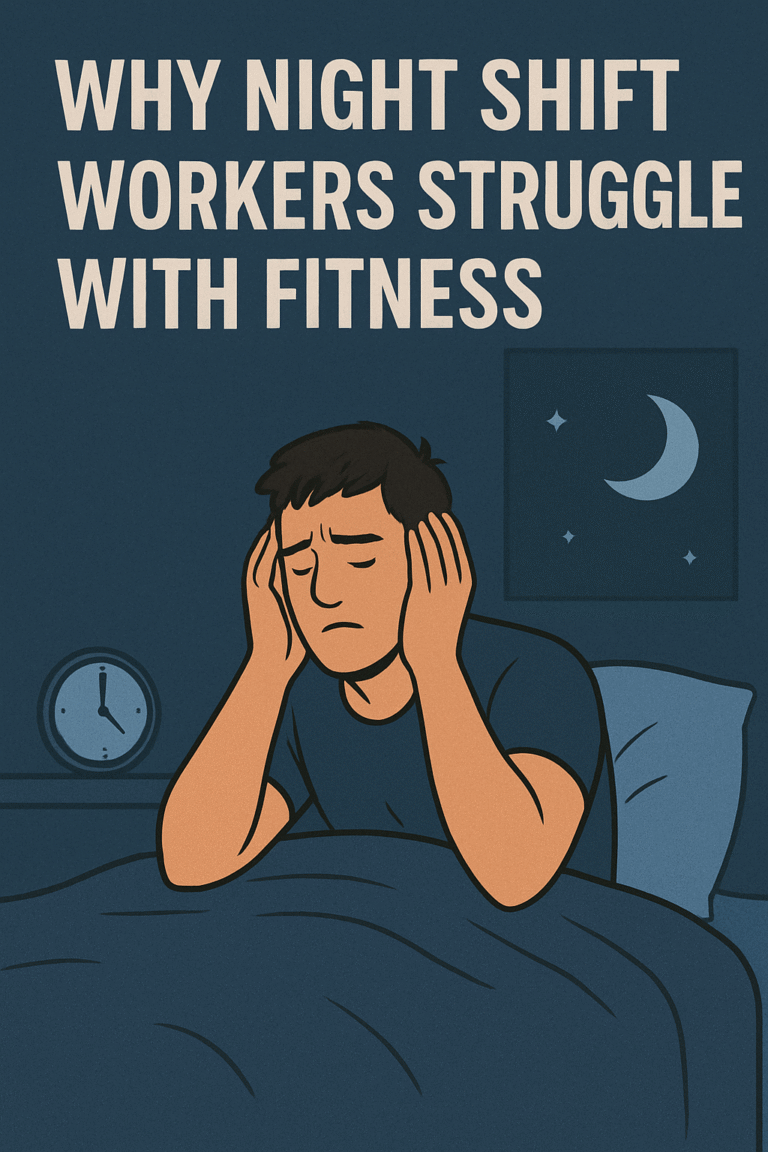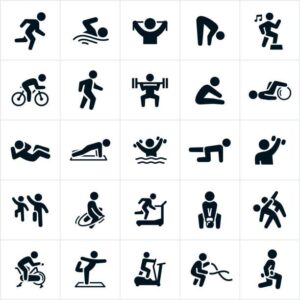📊 Tracking Progress: How to Measure Fitness Without Just Using the Scale
When most people start a fitness journey, the first thing they turn to for progress tracking is the bathroom scale. It’s quick, it’s simple, and it gives you a number. But here’s the truth: the number on the scale only tells part of your story — and sometimes, it can even be misleading.
Your body weight naturally fluctuates day-to-day due to hydration, hormones, stress, sleep, and even what you ate the night before. And if you’re building muscle while losing fat, the scale might not move at all, even though you’re getting fitter and healthier.
So, how do you really measure progress? The answer lies in non-scale victories — ways to track improvements in strength, endurance, appearance, health, and overall well-being. Below are 10 powerful methods to measure fitness without obsessing over the scale.
 1. Body Measurements 📏
1. Body Measurements 📏
One of the most reliable ways to see physical progress is by tracking inches lost or gained. Sometimes the scale doesn’t budge, but your waist, hips, or thighs may be shrinking as fat is replaced with lean muscle.
👉 How to do it:
-
Use a soft measuring tape.
-
Measure your waist, hips, chest, arms, and thighs every 2–4 weeks.
-
Record the numbers in a notebook or fitness app.
Even a 1–2 inch reduction in your waistline can show significant fat loss, regardless of what the scale says.
 2. Progress Photos 📸
2. Progress Photos 📸
Photos are a game-changer because they reveal changes you may not notice daily in the mirror. Muscle definition, improved posture, and a slimmer frame often show up in pictures long before they register on the scale.
👉 How to do it:
-
Take photos once a month, same time of day, same lighting.
-
Wear the same outfit (like shorts and a sports bra/t-shirt).
Comparing photos over time can boost motivation when you see visible transformation.
 3. Strength Gains 💪
3. Strength Gains 💪
Fitness isn’t just about how you look — it’s about what your body can do. Tracking strength is one of the most rewarding progress markers.
👉 How to track:
-
Note the weights you lift for exercises like squats, bench press, or deadlifts.
-
Track the number of push-ups, sit-ups, or pull-ups you can do.
If you’ve gone from struggling with 5 push-ups to completing 20, that’s massive progress — scale or no scale.
 4. Endurance & Performance 🏃
4. Endurance & Performance 🏃
Cardiovascular fitness is another area where progress shines. Even if your body weight doesn’t change, being able to run faster, cycle longer, or complete a workout with less fatigue shows incredible growth.
👉 Ways to measure:
-
Time yourself on a 1-mile run or 500m row.
-
Track how long you can jog without stopping.
-
Record improvements in HIIT circuits or sports performance.
For example, reducing your 1-mile run from 12 minutes to 9 minutes is proof that your fitness is improving.
 5. Flexibility & Mobility 🧘
5. Flexibility & Mobility 🧘
Flexibility often gets overlooked, but it’s key for preventing injury and moving better in daily life. Tracking improvements here can be motivating too.
👉 How to measure:
-
Try touching your toes — note how close you get.
-
Test hip or shoulder mobility with stretches.
-
Track yoga poses you couldn’t hold before.
If you go from barely touching your shins to placing your palms on the floor, that’s undeniable progress.
 6. Energy Levels & Mood ⚡
6. Energy Levels & Mood ⚡
One of the best parts of working out isn’t physical at all — it’s how you feel. Exercise improves energy, sleep quality, and mood by reducing stress hormones and releasing endorphins.
👉 Ask yourself weekly:
-
Do I feel more energetic throughout the day?
-
Am I sleeping better?
-
Do I feel less stressed or more confident?
These mental and emotional changes are huge wins that no scale can capture.
 7. Resting Heart Rate & Recovery ❤️
7. Resting Heart Rate & Recovery ❤️
Your heart is one of the most important muscles you’ll ever train. As your fitness improves, your resting heart rate (RHR) tends to drop, and your recovery after exercise gets faster.
👉 How to track:
-
Take your pulse every morning before getting out of bed.
-
Use a smartwatch or fitness tracker for continuous monitoring.
For example, lowering your RHR from 80 bpm to 65 bpm shows significant cardiovascular improvement.
 8. How Your Clothes Fit 👕
8. How Your Clothes Fit 👕
Your jeans, shirts, or dresses often tell a better story than the scale. If your waistband feels looser or your arms fill out sleeves more from muscle growth, that’s progress worth celebrating.
👉 Pro tip:
Don’t rush to buy new clothes too soon — use the changes as motivation and reward yourself when you hit milestones.
 9. Daily Activity Levels 🚶
9. Daily Activity Levels 🚶
Sometimes progress isn’t in the gym — it’s in your everyday life. If you’re walking more, climbing stairs without getting winded, or choosing to move instead of sit, you’re making lifestyle progress.
👉 How to track:
-
Use a step counter or smartwatch.
-
Aim to gradually increase your daily steps (e.g., from 5,000 to 8,000).
Consistent activity outside workouts is a sign that fitness is becoming part of your lifestyle.
 10. Overall Well-Being 🌟
10. Overall Well-Being 🌟
At the end of the day, true progress is about feeling happier, healthier, and stronger. If you’re more confident, more disciplined, and proud of the effort you put in, that’s success.
Fitness is about building a life where you can do more, live longer, and enjoy every moment — not just chasing a number.
 ✨ Final Takeaway
✨ Final Takeaway
The scale can be a tool, but it’s not the only tool — and it definitely shouldn’t be the main one. Real progress comes in many forms:
-
Lifting heavier weights
-
Running faster or longer
-
Sleeping better
-
Feeling more energized
-
Gaining confidence in your own skin
So the next time you feel discouraged because the scale didn’t move, look at your non-scale victories. Chances are, you’re making more progress than you think.
✅ Action Step for You:
Pick 3–4 non-scale methods from this list and start tracking today. Over the next few months, you’ll build a far clearer, more motivating picture of your fitness journey.













